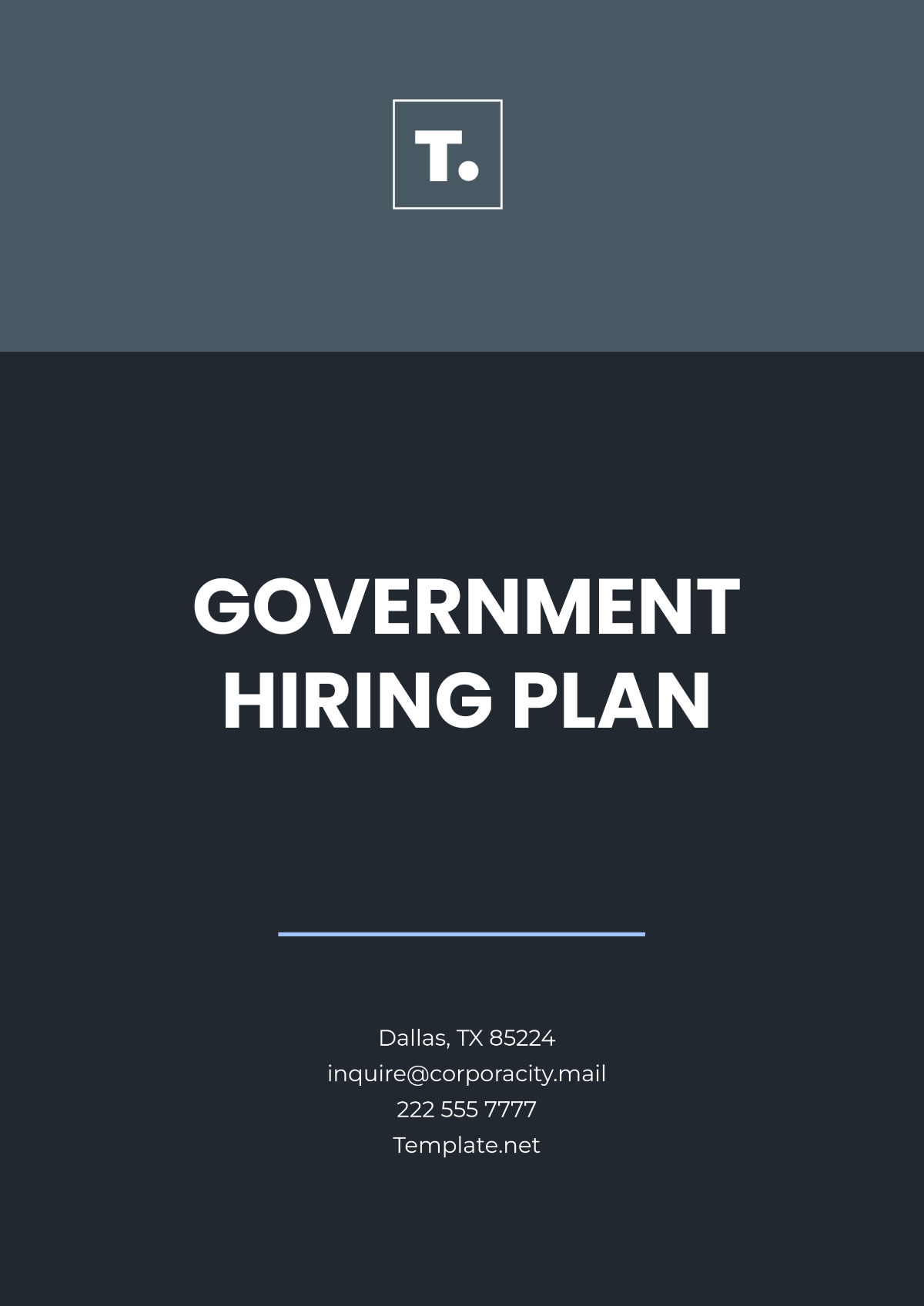Sample Onboarding Hiring Plan
Prepared by:
[Your Name]
[Your Company Name]
Introduction
The Onboarding Hiring Plan is designed to provide a structured and organized approach to integrating new employees into [Your Company Name]. The plan ensures that each new hire is equipped with the tools, resources, and knowledge needed to succeed in their role. It helps both the organization and the new hire navigate the initial phase of employment, fostering a positive and engaging experience from day one.
1. Pre-Employment Stage
Before the new hire begins, several critical tasks must be completed to ensure a smooth onboarding process.
Tasks:
Offer Letter and Contract Signing: Send the official offer letter, contract, and any required documentation for signature.
Prepare Workstation and Equipment: Ensure that the new employee's workstation is ready, including a computer, phone, necessary software, and access credentials.
Set Up Email and Accounts: Create the employee's email address, login credentials for company systems, and any relevant software accounts.
Welcome Packet: Send a welcome packet containing company policies, benefits information, and any other relevant documents to the new hire before their first day.
2. First Day: Orientation
The first day sets the tone for the new hire's experience at [Your Company Name]. It is essential to introduce them to the team, familiarize them with company culture, and provide essential information about their role.
Agenda:
Welcome Meeting: Host a meeting with HR or the hiring manager to formally welcome the new hire to the team and explain the onboarding schedule.
Office Tour: Provide a tour of the office or a virtual tour if remote, introducing key locations such as the kitchen, restrooms, and emergency exits.
Team Introduction: Arrange for the new hire to meet with key colleagues and team members to foster early connections.
Introduction to Company Culture: Discuss the company’s values, mission, and vision, and how the new hire’s role aligns with these elements.
Workstation Setup: Ensure that the new hire is set up with their computer, software, and any other necessary tools for their role.
3. First Week: Role-Specific Training and Integration
The first week is a critical time to help the new hire become familiar with their role, department, and key responsibilities.
Tasks:
Job-Specific Training: Provide training on the core duties and responsibilities of the position. This may include shadowing, role-playing, or reviewing workflows and procedures.
Mentorship Program: Assign a mentor or buddy from the team to guide the new hire, answer questions, and provide support during the transition period.
Team Meetings: Ensure the new hire attends relevant team meetings to gain insight into ongoing projects and team dynamics.
HR and Benefits Overview: Review the company’s benefits, policies, and any paperwork that the employee needs to complete, such as tax forms or insurance enrollment.
Check-in with Hiring Manager: A formal meeting with the hiring manager to discuss expectations, and progress, and answer any questions the new hire might have.
4. First Month: Continued Training and Performance Feedback
The first month is essential for developing a deeper understanding of the role and receiving constructive feedback.
Tasks:
Ongoing Training: Provide additional training sessions, either formal or on-the-job, to enhance the new hire’s skills and knowledge. Focus on areas requiring improvement or complexity.
Goal Setting: Have the hiring manager and the new hire set short-term goals to be achieved within the first 30 days, fostering a sense of direction and purpose.
Regular Check-ins: Schedule weekly or bi-weekly check-ins with the hiring manager to monitor progress, discuss challenges, and celebrate successes.
Feedback Session: Provide the new hire with feedback on their performance thus far, discuss areas for improvement, and answer any questions about the role.
5. End of Probation Period (3-6 Months): Final Evaluation and Long-Term Planning
After 3 to 6 months, it is time to review the employee's performance, adjust goals, and ensure they are well integrated into the organization.
Tasks:
Formal Performance Review: Conduct a formal performance review to evaluate how well the new hire has integrated into the team and met role expectations.
Adjust Goals and Expectations: Based on feedback and the review, adjust goals, offer additional training if needed, and set long-term expectations.
Career Development Planning: Start discussions about career development, including potential future roles, professional growth opportunities, and training requirements.
Continued Mentorship: Maintain mentorship support and integrate the new hire into additional company initiatives, such as cross-departmental projects or leadership development programs.
6. Post-Onboarding: Continuous Engagement and Feedback
The onboarding process doesn’t end after the first few months. Continuous engagement and feedback are essential for long-term success.
Tasks:
Employee Engagement: Regularly assess the new hire’s engagement levels through surveys or informal check-ins. Look for areas of improvement in company culture, team integration, and job satisfaction.
Ongoing Training and Development: Offer opportunities for skill-building and professional development through workshops, seminars, or online courses.
Feedback Loop: Continue gathering feedback from the new hire to refine the onboarding process and make improvements for future employees.
Conclusion
This Onboarding Hiring Plan is designed to guide the structured integration of new hires at [Your Company Name]. By following a clear, consistent process, organizations can help new employees feel welcomed, supported, and equipped to succeed in their roles, ultimately contributing to long-term employee satisfaction and retention.
























